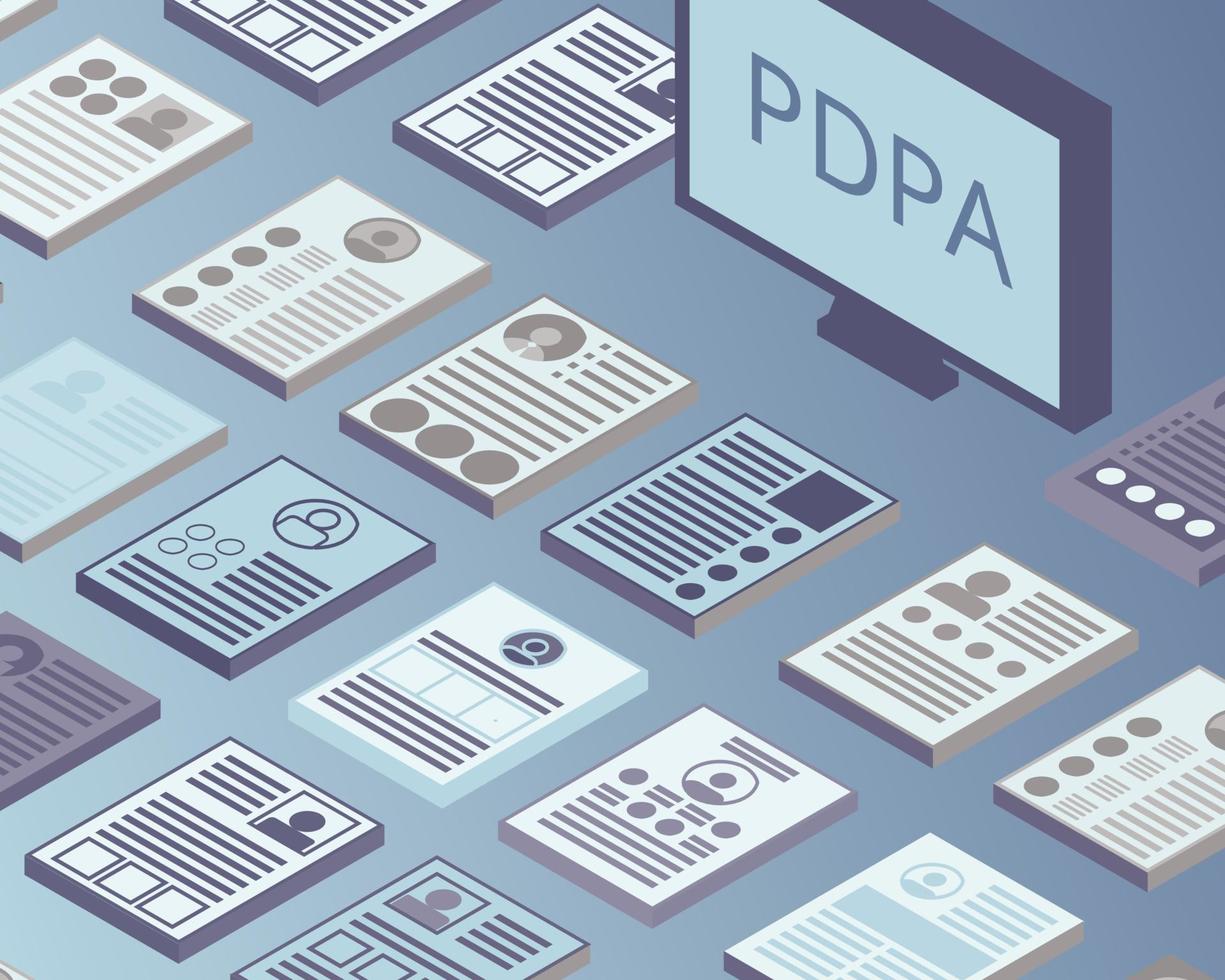
Mastering PDPA Compliance in Singapore: Best Practices and Common Pitfalls
July 30, 2024






In today’s hyper-connected digital world, data is the new gold. But with great power comes great responsibility, especially when it comes to handling personal data. That’s where Singapore’s Personal Data Protection Act (PDPA) steps in. Understanding and complying with the PDPA is not just a legal necessity but also a cornerstone for building and maintaining customer trust. This blog post will guide you through the essentials of the PDPA, why it matters, and how your business can ensure compliance while safeguarding the trust of your customers.
![]()
What is the PDPA?
The Personal Data Protection Act (PDPA) is Singapore’s comprehensive data protection law that governs the collection, use, and disclosure of personal data by organizations. Introduced in 2012 and fully enforced by July 2014, the PDPA was established to ensure that personal data is managed responsibly while balancing the need for organizations to collect and use such data.
The key objectives of the PDPA are to protect individuals' personal data and to promote a trustworthy business environment in Singapore. The act serves as a regulatory framework that sets out various obligations that organizations must adhere to when handling personal data. This not only helps in safeguarding individual privacy but also enhances the reputation of businesses that comply.
Since its inception, the PDPA has evolved to keep pace with technological advancements and the changing digital landscape. Amendments have been made to address emerging threats and challenges, such as data breaches and the misuse of personal data. The PDPA applies to all organizations, including small businesses, corporations, and even non-profit organizations, as long as they are involved in the handling of personal data.
Core Principles of PDPA
At the heart of the PDPA are nine core obligations that organizations must fulfill to ensure compliance. These obligations are designed to protect personal data throughout its lifecycle, from collection to disposal.

Legal Consequences
Non-compliance with the PDPA can have serious legal consequences for businesses. The PDPA grants the Personal Data Protection Commission (PDPC) the authority to impose fines and other penalties on organizations that fail to comply with the act. These fines can be substantial, with the maximum penalty being SGD 1 million or more in cases of severe breaches.
For example, in 2019, a local healthcare provider was fined SGD 750,000 for a data breach that exposed the personal data of over 14,000 individuals. The breach occurred due to inadequate security measures and the failure to notify affected individuals in a timely manner. This case serves as a stark reminder of the financial and reputational risks associated with non-compliance.
Building and Maintaining Customer Trust
Beyond the legal implications, complying with the PDPA plays a critical role in building and maintaining customer trust. In a world where data breaches and privacy concerns are increasingly common, customers are becoming more cautious about who they share their personal data with.
When your business demonstrates a commitment to data protection by complying with the PDPA, it sends a powerful message to your customers: you value their privacy and are taking the necessary steps to protect their data. This, in turn, enhances your brand’s reputation and fosters long-term customer loyalty.
On the flip side, data breaches can have a devastating impact on customer trust and business reputation. Once trust is lost, it can be challenging, if not impossible, to regain. Therefore, it’s essential to view PDPA compliance not just as a legal obligation but as a strategic advantage that can set your business apart from competitors.

Data Protection Officer (DPO) Appointment
One of the first steps towards PDPA compliance is the appointment of a Data Protection Officer (DPO). The DPO is responsible for overseeing the organization’s data protection strategy and ensuring that it complies with the PDPA.
The DPO’s responsibilities include conducting regular data audits, developing data protection policies, and providing training to employees on PDPA compliance. The DPO should have a thorough understanding of the PDPA and possess the necessary qualifications and experience to manage data protection effectively.
Data Audit and Mapping
Conducting a data audit is a crucial step in understanding the types of personal data your organization collects, how it is used, and where it is stored. A data audit involves identifying all data assets, assessing their sensitivity, and determining the flow of data within the organization.
Data mapping, on the other hand, helps organizations visualize how personal data moves through various systems and processes. By mapping data flows, organizations can identify potential risks and areas where additional security measures may be needed.
Implementing Data Protection Policies
Developing and implementing comprehensive data protection policies is essential for ensuring PDPA compliance. These policies should outline the procedures for data collection, use, storage, and disposal, as well as the roles and responsibilities of employees in protecting personal data.
Regular staff training is also critical to ensuring that employees understand their obligations under the PDPA and are equipped to handle personal data responsibly. Training programs should be conducted regularly and updated to reflect any changes in the PDPA or data protection best practices.

Obtaining and managing customer consent is a fundamental aspect of PDPA compliance. Organizations must ensure that they obtain explicit consent from individuals before collecting their personal data. This consent must be documented and easily accessible.
Using consent management tools and platforms can help organizations streamline the process of obtaining and managing consent. These tools allow organizations to track consent, manage opt-ins and opt-outs, and ensure that they are compliant with the PDPA’s consent obligations.
Data Security Measures
Implementing robust data security measures is crucial for protecting personal data from unauthorized access, use, or disclosure. These measures should include encryption, secure data storage, access controls, and regular security audits.
Organizations should also consider investing in advanced cybersecurity solutions to prevent data breaches. This may include firewalls, intrusion detection systems, and data loss prevention tools. Additionally, organizations should establish a data breach response plan to ensure that they can quickly and effectively respond to any security incidents.
Data Retention and Disposal
The PDPA requires organizations to establish guidelines for data retention and disposal. Personal data should only be retained for as long as necessary to fulfill the purposes for which it was collected. Once the data is no longer needed, it should be securely disposed of to prevent unauthorized access.
Secure methods for data disposal include shredding physical documents, wiping electronic data, and securely destroying storage devices. Organizations should regularly review their data retention policies to ensure that they remain compliant with the PDPA.
Responding to Data Breaches
Despite the best efforts to protect personal data, data breaches can still occur. That’s why it’s essential to have a data breach response plan in place. This plan should outline the steps to take in the event of a breach, including notifying affected individuals and reporting the breach to the PDPC.
Under the PDPA, organizations are required to report data breaches that result in significant harm to individuals or that involve a large volume of personal data. Prompt and transparent communication with affected individuals can help mitigate the impact of a data breach and maintain customer trust.

Data Protection Management Systems (DPMS)
To streamline compliance efforts, organizations can implement a Data Protection Management System (DPMS). A DPMS is a software platform that helps organizations manage their data protection obligations and ensure continuous compliance with the PDPA.
A DPMS typically includes features such as data mapping, consent management, policy enforcement, and audit trails. By centralizing data protection activities, a DPMS can help organizations identify potential compliance gaps and take corrective action before issues arise.
Automation Tools
Automation tools can also play a significant role in simplifying data protection processes. For example, consent management tools can automate the process of obtaining, tracking, and managing customer consent, reducing the risk of human error.
AI and machine learning technologies can further enhance data protection efforts by identifying patterns and anomalies that may indicate potential data breaches. These technologies can also help organizations predict and prevent data security incidents before they occur.
Cybersecurity Solutions
Given the increasing sophistication of cyber threats, investing in advanced cybersecurity solutions is essential for protecting personal data. These solutions may include encryption, multi-factor authentication, intrusion detection systems, and security information and event management (SIEM) platforms.
Regular security audits and updates are also crucial for maintaining a robust cybersecurity posture. Organizations should conduct both internal and external security audits to identify vulnerabilities and ensure that their security measures remain effective.

Regular Compliance Audits
To ensure ongoing compliance with the PDPA, organizations should conduct regular compliance audits. These audits should assess the organization’s data protection practices, identify any areas of non-compliance, and recommend corrective actions.
Both internal and external audits can provide valuable insights into the effectiveness of your data protection measures. Regular audits also demonstrate your organization’s commitment to data protection and can help build trust with customers and stakeholders.
Employee Training and Awareness
Creating a culture of data protection within your organization is key to maintaining compliance with the PDPA. Ongoing employee training and awareness programs are essential for keeping staff informed about their responsibilities and the latest data protection practices.
Training programs should cover topics such as the importance of data protection, how to handle personal data securely, and what to do in the event of a data breach. By fostering a data protection culture, you can reduce the risk of human error and ensure that your organization remains compliant with the PDPA.